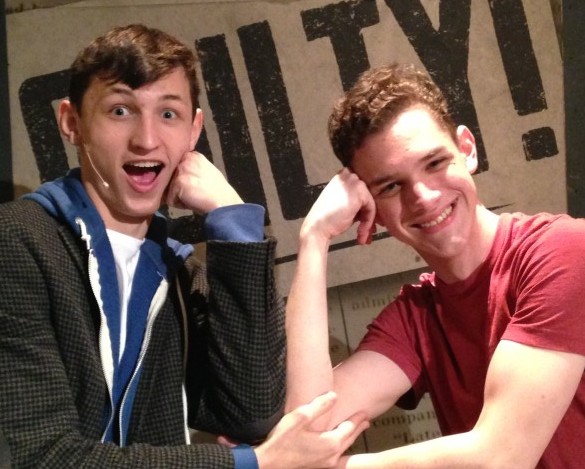Colors and Casts of Chicago

Senior Ian Anderson, red cast Amos, and junior Caleb Sohigan, white cast Amos.
Chicago, the spring musical, has double casted its show. Double casting is when you have two different and separate casts for one show. It’s unlike the normal professional casting where you have an understudy and a lead, because both casts perform.
Truthfully, when I heard about this idea, I was not in favor. I believe in a lead and understudy, but after practicing with both casts, I can see I was dead wrong.
A lead and an understudy make sense when you have a person who is clearly superior, but after witnessing both casts practice, I noticed something. Neither cast was superior. Both of the double of casts played their characters well, but a little differently which added to the magic of interpretation of theater.
“I think double casting gives the show an opportunity to include more talented actors,” said junior Mackensey King, the “red cast” Mona. “One show could be completely different from the other, but both good in their own ways.”
We have to remember, this is not professional theater. This is a school show, and while they will turn out a professional-worthy production, this is still a learning environment. Chicago has a pitifully small cast, and without double casting, they would have had to turn away about 12 people more than they already did.
“I like being double-casted because you learn from your counterpart,” said senior Olnita Martini, the “white cast” Liz. Senior Gabrielle Van Steenberg, the “white cast” Mona, agreed. “The advantage is that you can learn from your partner’s strengths and weaknesses,” she said.
While there are many pros, there are also a couple cons. “I’m generally in favor, but the largeness of the cast makes costuming and tech kinda difficult,” Van Steenberg said.
However, as an overall, everyone seems to like the double cast rather than the normal lead and understudy. “If there are a lot of people auditioning, and a lot of talented people in the program, you want to give everyone a chance to shine,” said senior Emma Siddall, the “red cast” Velma Kelly.
I encourage everyone to see each cast at least once, and see as many shows as possible. In theater, each show will not be the same, even if you have the same cast.
